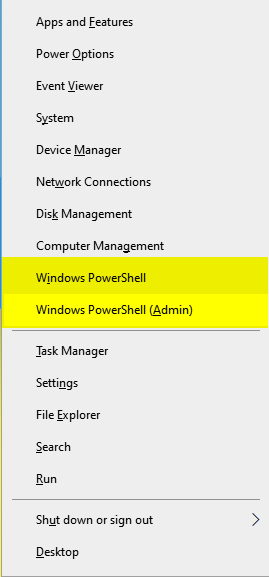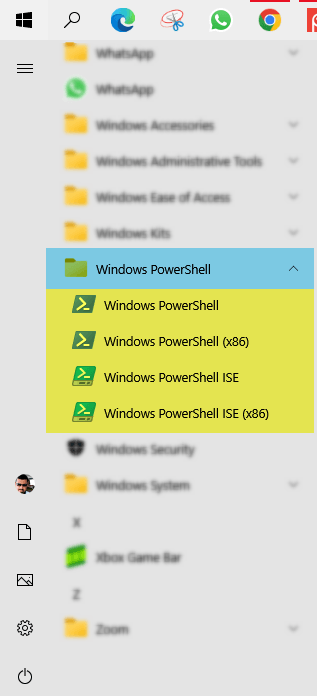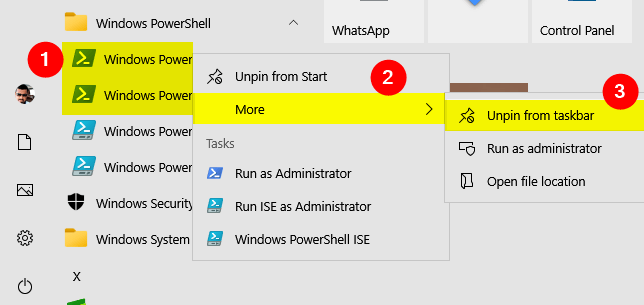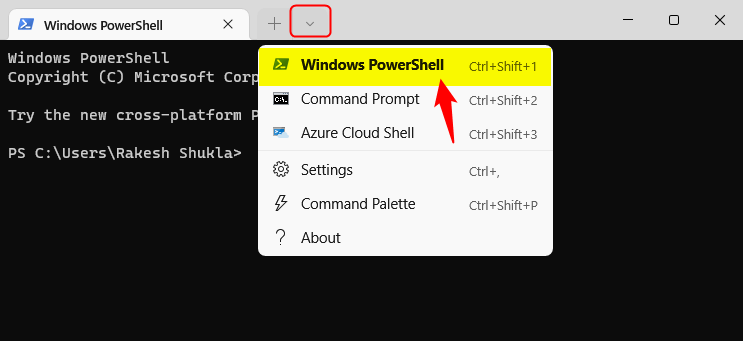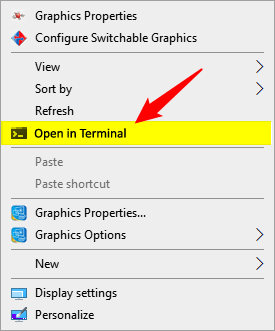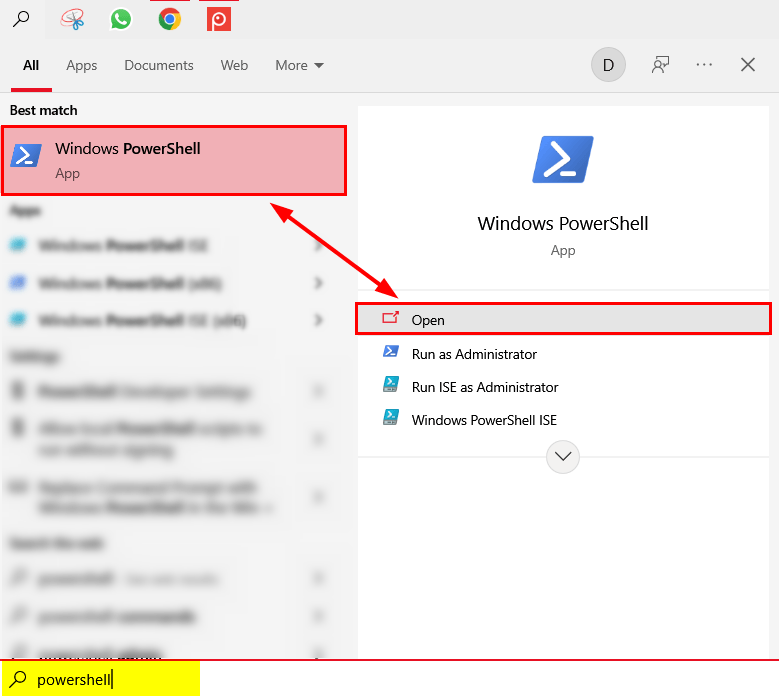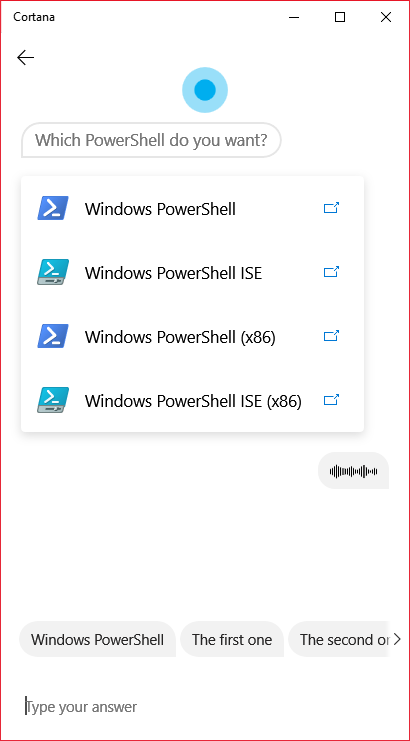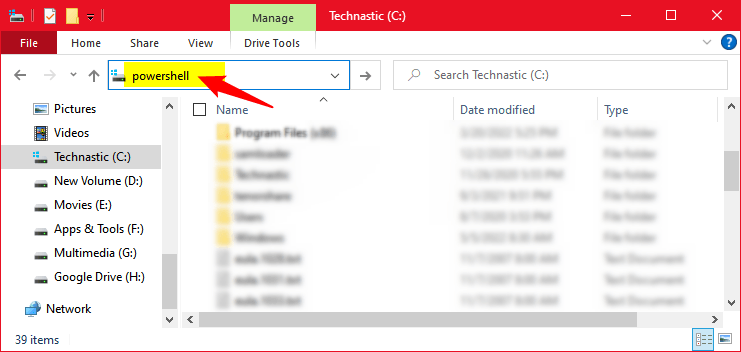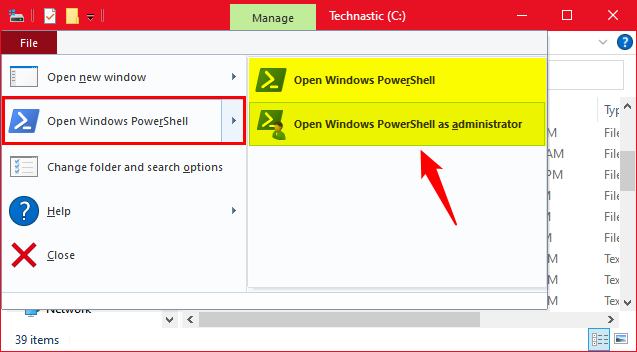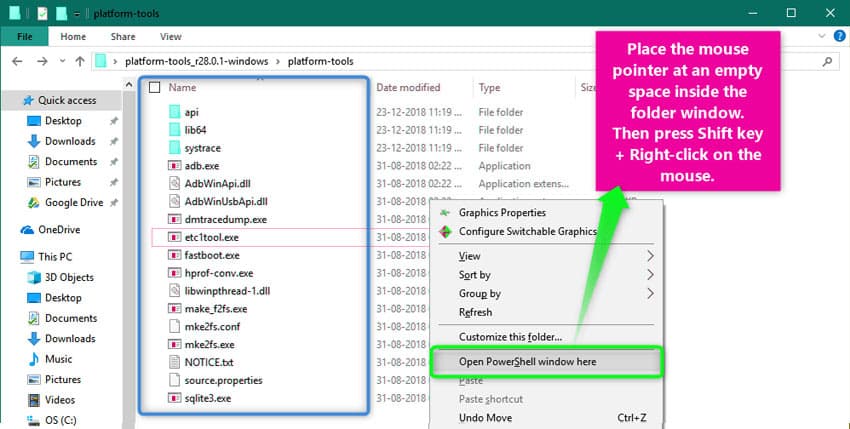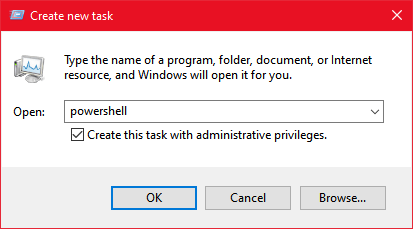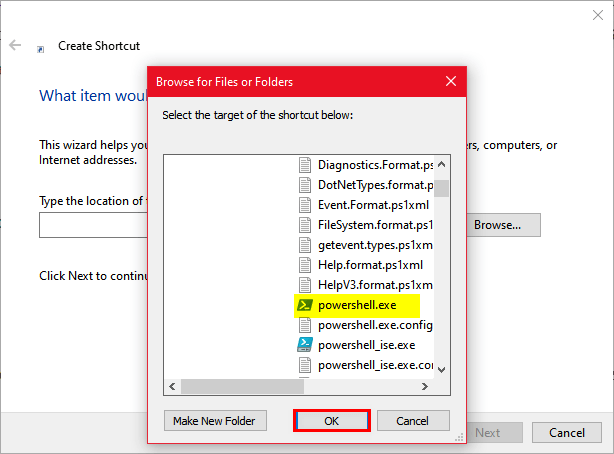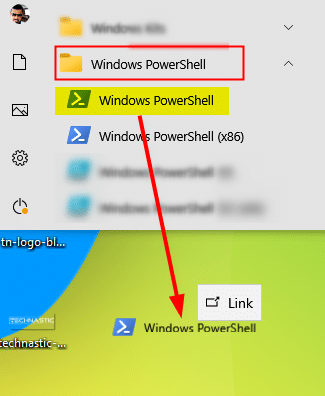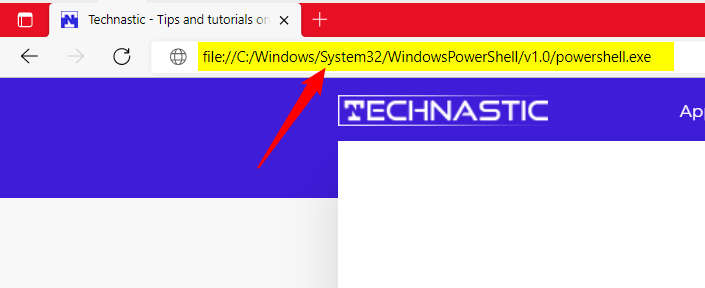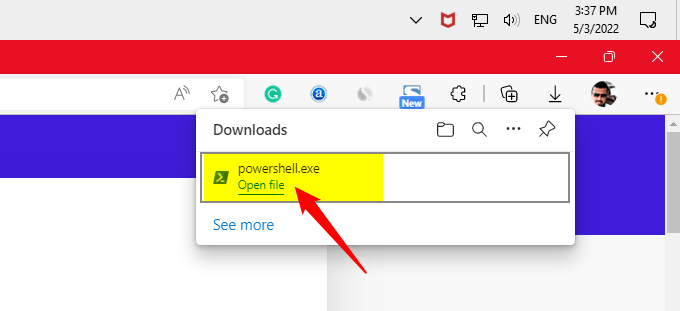Windows PowerShell is a powerful shell program for advanced users. It can be used to execute a host of basic and complicated tasks. Knowing the quick ways to access PowerShell will save you time, especially for frequent users. Using cmdlets and combining them with different parameters, filters, and conditions, you can diagnose your computer, manage files, and customize your PC efficiently. This article will explore the various methods to open PowerShell in Windows 10 and 11 for enhanced efficiency.
Before you check out the ways to open PowerShell, do not forget to head over to my article describing 18 ways to open the Command Prompt in Windows 10.
1. Open PowerShell (Admin) from the Power User Menu
Windows has a Power User Menu with advanced options. You can easily launch PowerShell normally or as an administrator from here. There are 2 easy ways to access the Power User Menu in Windows.
- Right-click the Start menu or Windows icon at the bottom left corner of your computer’s screen.
- Press the Windows + X keyboard shortcut.
Once the Power User Menu pops up, choose Windows PowerShell or Windows PowerShell (Admin) to launch the program as an administrator.
2. Run PowerShell from the Start Menu
Windows 10 and 11 users can also open Powershell from the Start Menu. Click the Start icon and scroll down to a folder called ‘Windows PowerShell‘. Click it and choose Windows PowerShell to run the program.
To run PowerShell from the Start Menu as an administrator, right-click Windows PowerShell > More > Run as administrator.
3. Pin PowerShell to the Taskbar
You can pin the PowerShell shortcut to the Taskbar to launch it with a single click. Click the Start icon, scroll down to ‘Windows PowerShell‘, and click it. Right-click Windows PowerShell, and click the More >Pin to Taskbar option. The PowerShell shortcut will be pinned to the Windows Taskbar.
4. Using Windows Terminal
Microsoft introduced a new, modern, feature-rich terminal console called Terminal with Windows 11. It packs together 3 command-line tools: Command Prompt, PowerShell, and Azure Cloud Shell. Windows 10 users can install Windows Terminal from the Microsoft Store.
When you launch Windows Terminal, it’ll load PowerShell by default. However, if you want to open Command Prompt or Azure Cloud Shell, click the reversed caret icon and make a selection. Alternatively, you can switch between different shells using Ctrl + Shift + 1/2/3. We have a list of more than 250 keyboard shortcuts for Windows 10 and 11 for you to check out.
Once you install the Windows Terminal app, a new item named Open in Terminal will be added to your Context Menu.
5. Open PowerShell from Search
You can also open PowerShell using the Windows search functionality, which allows you to search any file, document, or app on your computer. Click the Search icon > Search Box and type “PowerShell“. Click Windows PowerShell on the left-hand pane or the Open or Run as Administrator option in the right-hand pane.
6. Using Voice Command
Every OS has its digital assistant these days. Windows has one too, and it’s called Cortana. You can launch PowerShell in Windows simply by giving a voice command to Cortana. Just launch the voice assistant by clicking the Cortana icon. Now click the microphone icon in the bottom-right corner of the app window, and say “open powershell“. Cortana will open a PowerShell window for you.
7. Run PowerShell from powershell.exe
You can also launch PowerShell by running the program’s executable file (.exe). Just navigate to Windows > System32 directory on your PC, look for ‘powershell.exe‘, and double-click it to launch PowerShell. You can open it as an administrator by performing a right-click action on the executable file. The powershell.exe location path on Windows 10 and 11 is as follows:
- C:/Windows/System32/WindowsPowerShell/v1.0/powershell.exe
- C:/Windows/SysWOW64/WindowsPowerShell/v1.0/powershell.exe
Do not forget to check out my tutorial on finding the file and folder path in Windows 10 and 11.
8. Open PowerShell as an Admin from CMD
You can launch an instance of PowerShell from the Command Prompt, or open PowerShell as an administrator from the CMD window itself. To run PowerShell from the Command Prompt, type start powershell.exe in the CMD window, and press Enter.
- Open the Command Prompt, type ‘powershell‘, and hit Enter.
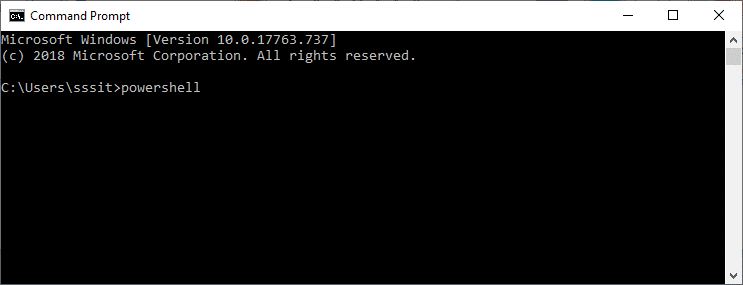
- The Command Prompt will turn into a PowerShell window.
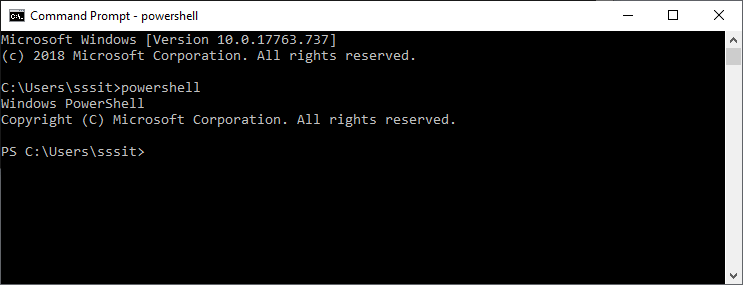
- Now, type or paste
start-process PowerShell -verb runasand press the Enter key.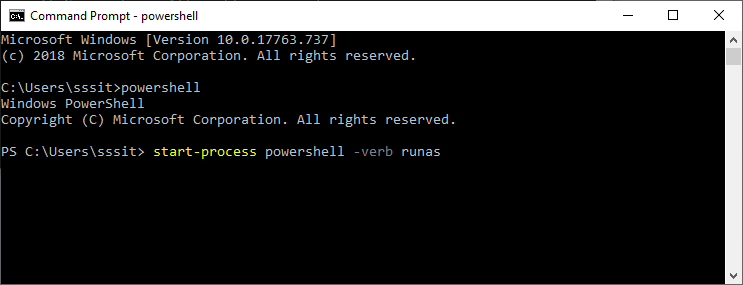
- Doing so will open PowerShell as an administrator.
To open PowerShell as an admin from CMD using a single line of command, you can execute the following command:
powershell -Command "Start-Process PowerShell -Verb RunAs"
9. Open PowerShell Admin from PowerShell
In case you want to open another instance of PowerShell from the current Powershell window, type start powershell.exe , and press the Enter key.
However, you can also open a new instance of PowerShell with administrative privileges using the following methods:
Method 1:
- Open Windows PowerShell, type ‘powershell‘, and press Enter to start a PowerShell session.
- Now, type
Start-Process PowerShell -Verb RunAsand press Enter.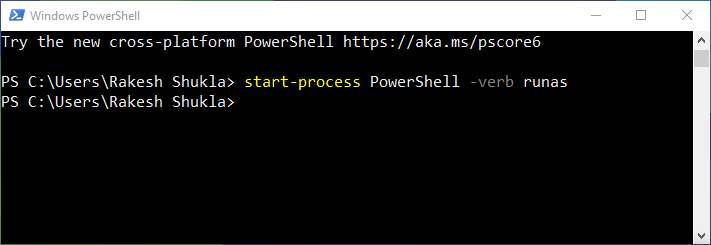
- This will bring up a new PowerShell window with admin privileges.
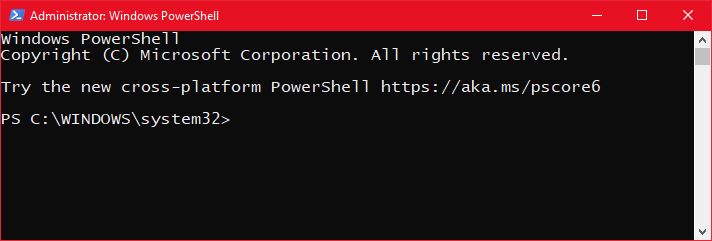
Method 2:
You can also use one of the following single-line commands to open it as an administrator from PowerShell itself.
start-process PowerShell -verb runas
OR
powershell -Command "Start-Process PowerShell -Verb RunAs"
Method 3:
Alternatively, you can also launch PowerShell as an admin from a normal PowerShell window as follows:
- Open PowerShell and execute the following command with your username.
runas /user:admin username powershell - When prompted, enter your computer’s password.
That’s it!
10. From the File Explorer Address Bar
If you want to open a PowerShell with a folder path, there is an easier way to do so in Windows 11, 10, or older. Open File Explorer on your PC, click the address bar, type “powershell” and press Enter. A PowerShell window will be launched.
11. Via the File Explorer Menu
There is another way to launch Windows PowerShell in a folder in Windows 10 and 11. This method also offers a way to run PowerShell with the folder path as an administrator. Open a folder window, click File > Open PowerShell, or Open Command Prompt as administrator.
12. Open PowerShell in a Folder
To launch a command window with a folder’s path, there is yet another way to do it. You can use this method to run PowerShell with a file or folder path in Windows. Open the folder or directory where you want to open a PowerShell window. Make sure to placethe mouse pointer in a blank spot in the folder window, then press the Shift key + right-click. Choose the Open PowerShell window here. option in the context menu.
13. From Task Manager
You can also open PowerShell in Windows 10 or 11 from the Task Manager. You can launch Task Manager using Ctrl + Shift + Esc. Click More details from the bottom-left corner of the Task Manager window. Click on File > Run new task. Now, type “powershell” in the text box of the Create New Task pop-up and click OK. You can select “Create this task with administrative privileges” option if you want to run PowerShell as an admin.
14. Create a PowerShell Shortcut
You can also create a PowerShell shortcut on the desktop to launch it whenever you want. To do that, right-click on the desktop or the location where you want to create a shortcut. Choose New > Shortcut from the Context Menu. Click the Browse option and navigate to C:\Windows\System32 or C:\Windows\SysWOW64Choose powershell.exe., and click OK.
Now, choose Next, assign a name to the newly created shortcut, and click Finish. In case you wish the shortcut to access PowerShell in admin mode, right-click on the shortcut icon, choose Properties > Advanced, select Run as administrator, and click OK.
There is a simpler way to create a shortcut on the desktop for PowerShell. Go to Start Menu > Windows PowerShell and drag the PowerShell shortcut to the desktop.
15. Via Microsoft Edge
There is yet another way to open PowerShell in Windows 10 and 11. Launch the Microsoft Edge browser on your PC. Now type or paste the location path of the powershell.exe in the URL box.
-
file://C:/Windows/System32/WindowsPowerShell/v1.0/powershell.exe
-
file://C:/Windows/SysWOW64/WindowsPowerShell/v1.0/powershell.exe
Then press Enter. A dialog box below the Downloads icon of the web browser will appear. Click the Open file option to open PowerShell.
16. Open PowerShell via the Run Box
You must be familiar with the Run app in Windows. It can be used to open a document, file, folder, or even a program. Press Windows + R on your keyboard to launch the Run app quickly. Type “powershell” in the text box and click OK. Doing so will open the PowerShell window.
17. From the Context Menu
There are a couple of ways to customize the Context Menu on Windows 10 and 11 using Registry Editor and Context Menu editor programs. You can easily add the option to launch PowerShell via the context menu using the detailed steps described in our tutorial.
We have covered all possible ways to open PowerShell in Windows 10 and 11. If you think we missed something, feel free to share it with us.
